How and why we should all start eating cicadas
Swarms of giant flying insects are covering the east coast of the US, but it’s not as bad as it sounds. Some chefs believe we should seize this opportunity, writes Isabelle Gerretsen

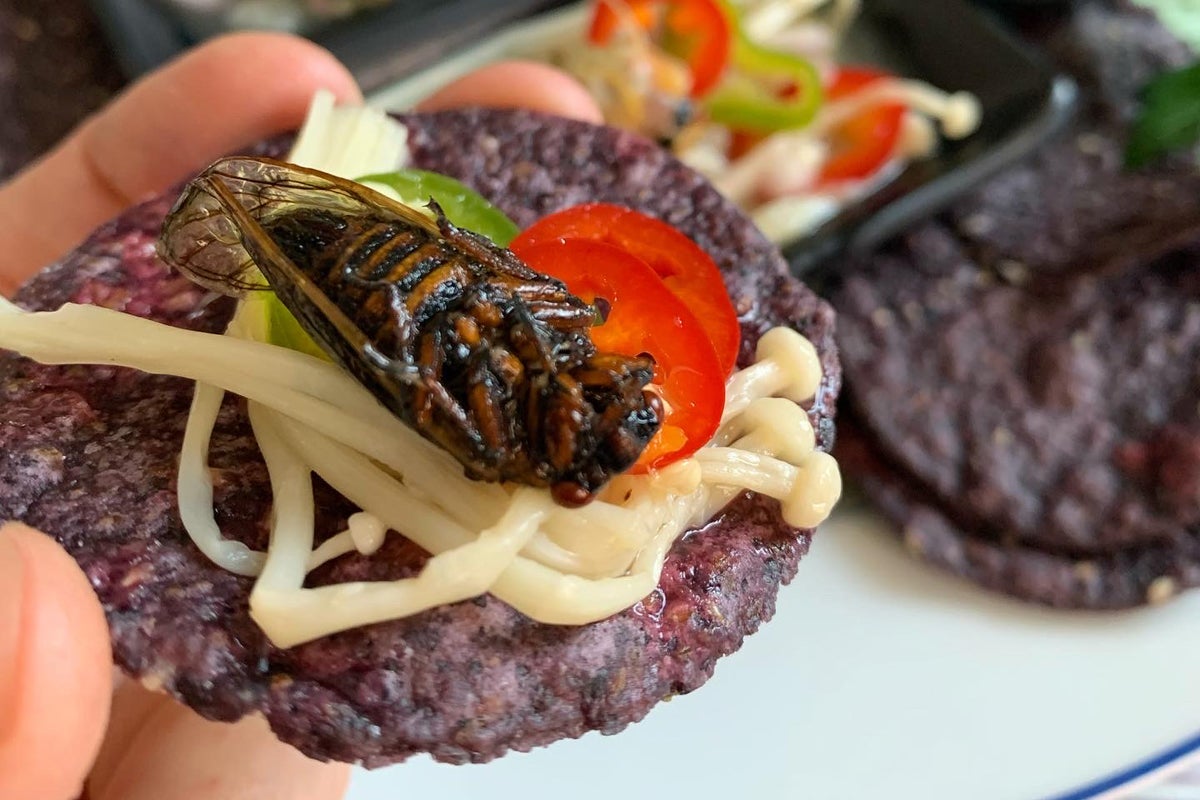
Trillions of large, flying insects are swarming the east coast of the US at the moment. These are the Brood X cicadas, large red-eyed bugs that only emerge every 17 years. When they finally surface, it is an extraordinary phenomenon.
“There will be something like 100,000 insects per acre spread across an area four times the size of England,” according to Jeffrey Lockwood, an entomologist from the University of Wyoming.
“These periodical cicadas are extraordinary because they live underground for 17 years and then emerge en masse,” he says. They overwhelm their predators with their sheer numbers.
While underground, the cicadas feed on tree roots, sucking up nutrients from the xylem cells, which transport water from the roots to the leaves.
It’s not fully understood why they choose to emerge after 17 years, says Deborah Landau, a conservation ecologist at The Nature Conservancy.
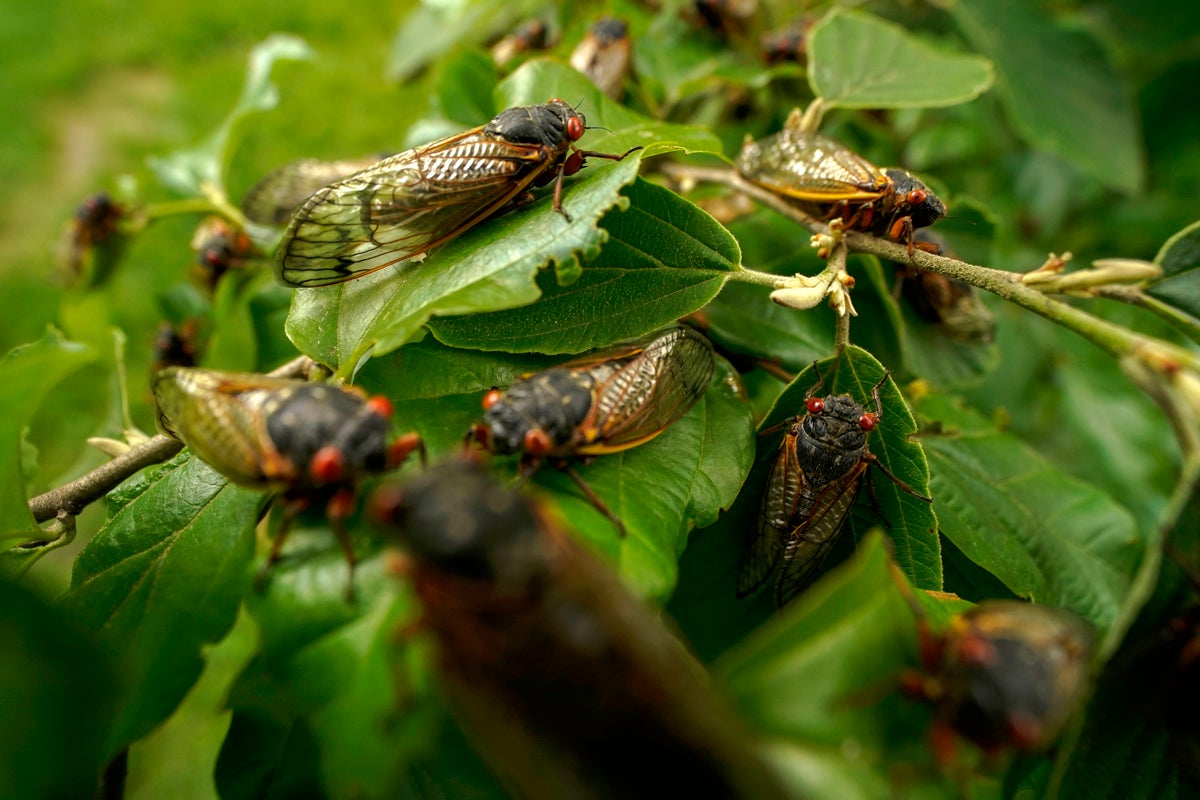
The emergence may be triggered by a change in the composition of the xylem fluid from tree roots or an increase in soil temperatures, she says.
Every 17 years, they appear in 15 US states for four to six weeks to mate. The cicada nymphs make their way out of the ground and climb into trees, where they shed their exoskeletons and inflate their wings.
Historically cicadas have been an important food source for Native American tribes and they are still eaten in many countries today
Then the male cicadas attract the females with a “deafening mating call”, according to Landau. “They are the loudest insects on the planet,” she says. Noise from the Brood X swarm can exceed over 100 decibels.
“Brood X will lay more than 500 trillion eggs. In a single square mile of forest with the densest populations, there will be as many eggs as there are stars in the Milky Way,” says Lockwood.
After the mating ritual, the cicadas die. Once the eggs hatch, a new generation of cicadas crawl underground where they will spend the next 17 years.
Unlike locusts that have ravaged parts of east Africa in recent years, the Brood X cicadas are not pests, scientists say. When their eggs fall to the ground, they help fertilise the soil and the surrounding trees, says Landau.
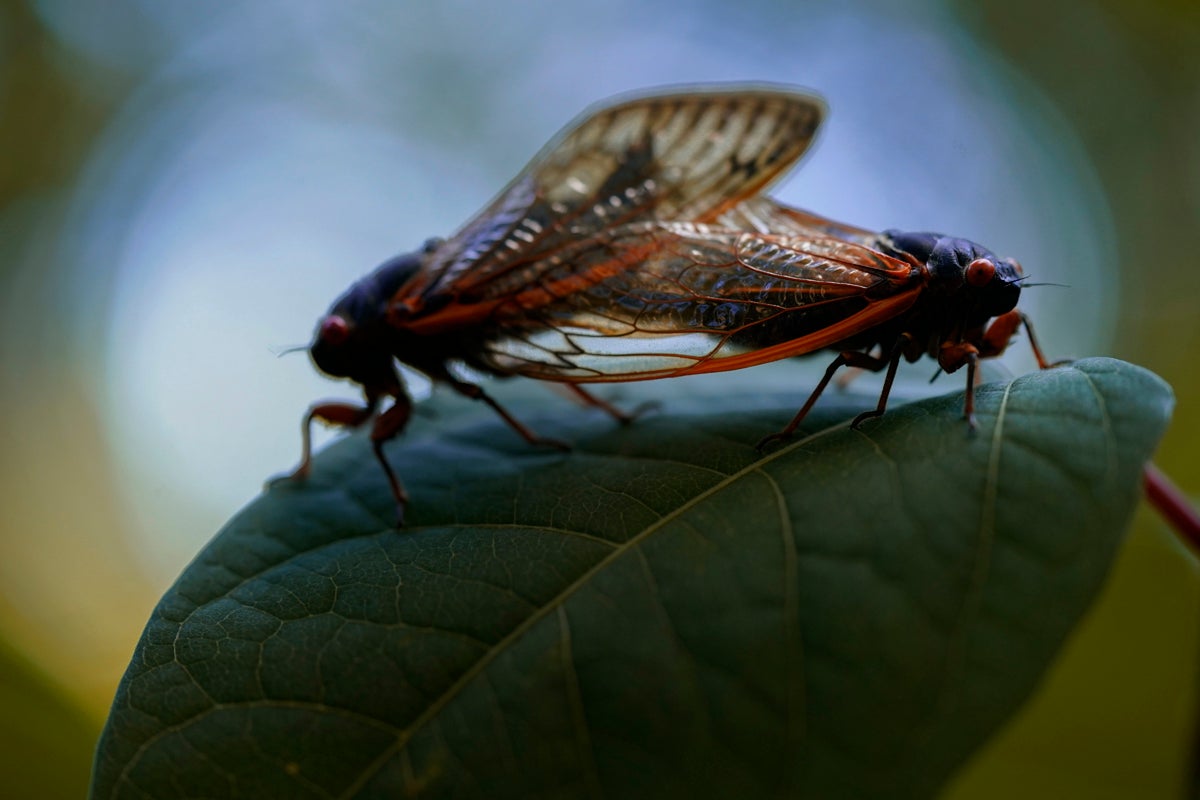
Besides providing an incredible natural spectacle, the Brood X swarm also offers something else: a free and sustainable food source.
Historically cicadas have been an important food source for Native American tribes and they are still eaten in many countries today. But for most Americans the idea isn’t instantly appealing.
“We have this phobia about eating insects. It is a mental hurdle to get around,” says Landau.
Around 2,000 insect species are eaten worldwide, in Africa, Asia and South America. But in most western countries, people are squeamish about the idea of eating bugs.
Landau says the emergence of Brood X cicadas presents a “terrific opportunity” to promote insect eating in the US.
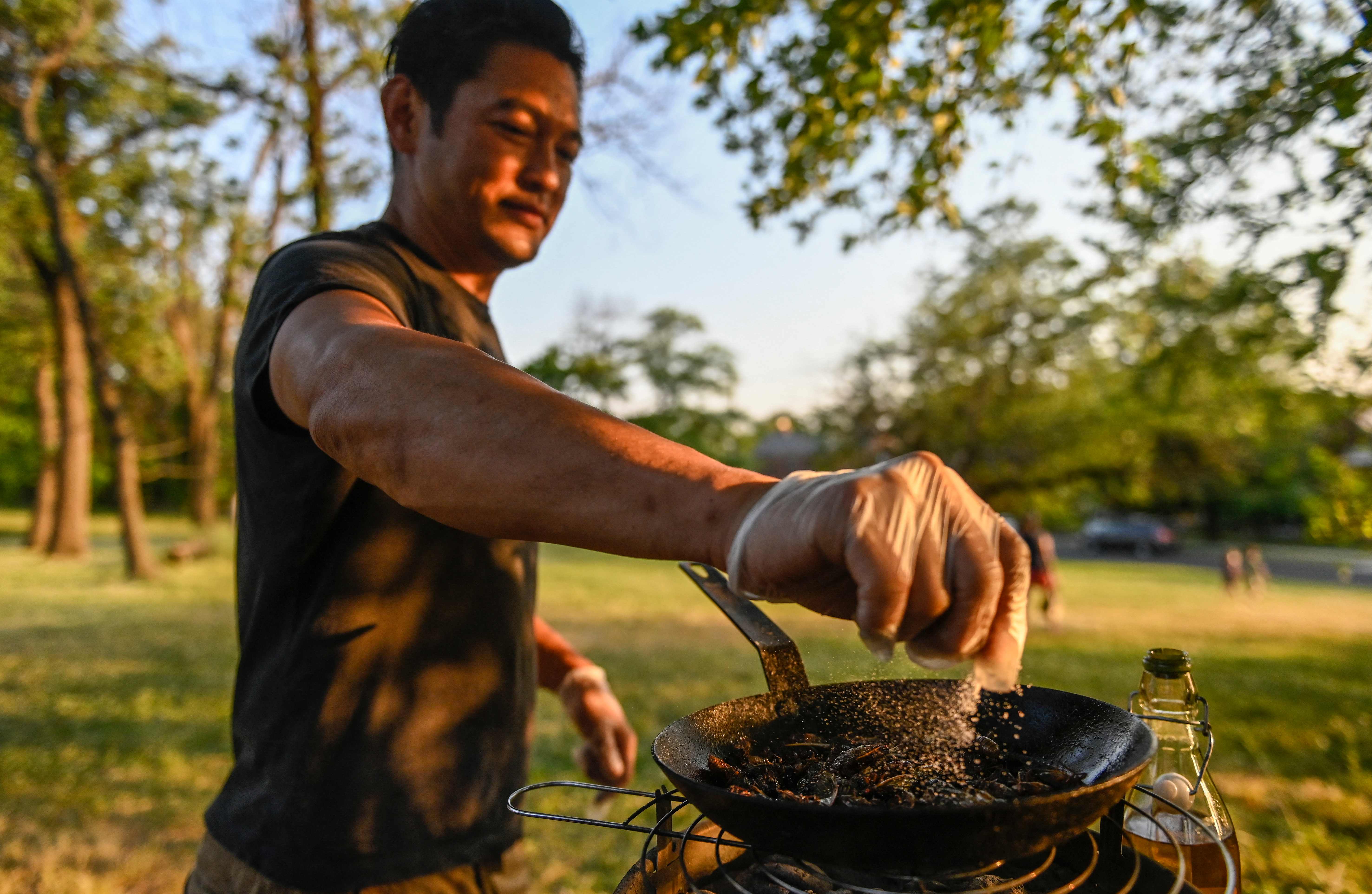
Chefs across the US are seizing on the challenge to present the cicadas as an appetising delicacy, rather than a stomach-churning option.
From preparing raw cicada sashimi to creating caviar made from their eggs, they are experimenting with innovative new dishes.
New York chef Joseph Yoon has spent the past month in a woodland near Princeton, New Jersey, foraging for cicadas. Yoon is one of the biggest promoters of eating insects in the US. He runs the advocacy organisation Brooklyn Bugs and views the emergence of Brood X as an opportunity to persuade Americans to try these insects.
Yoon had always wanted to try cicadas but had never been able to source them. Now he is collecting cicadas himself and including them in all his favourite dishes.
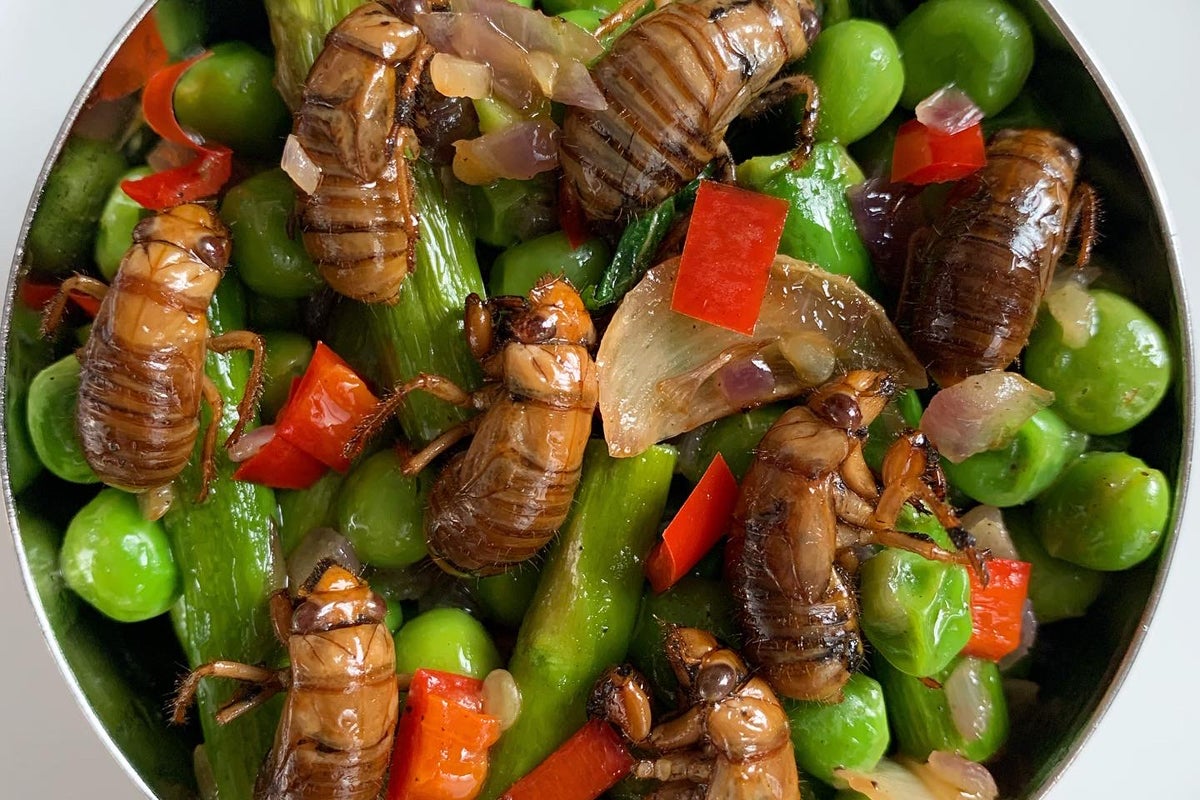
“It’s incredible. I can go out and select my own ingredients,” he says. “I have six to eight weeks to collect these cicadas - I am foregoing sleep for a while!”
To date, Yoon has used cicada nymphs in a wide range of dishes, including kimchi, salads and stir fry. Cicadas are incredibly versatile as an ingredient as they take on the flavour profile of whatever you mix them with, he says.
During this period, Yoon plans to make over 100 different dishes with cicadas and highlight that they are delicious when fried, roasted or blended into sauces.
“I want to show how flexible insects are as an ingredient and how easy they are to incorporate into your food,” he says.
He is pleased to see that it isn’t just adventurous chefs who are embracing cicadas. Across the eastern US people are harvesting the insects and cooking with them for the first time. “It has caught on wildly. It is so exciting to see people talking about eating insects,” he says.
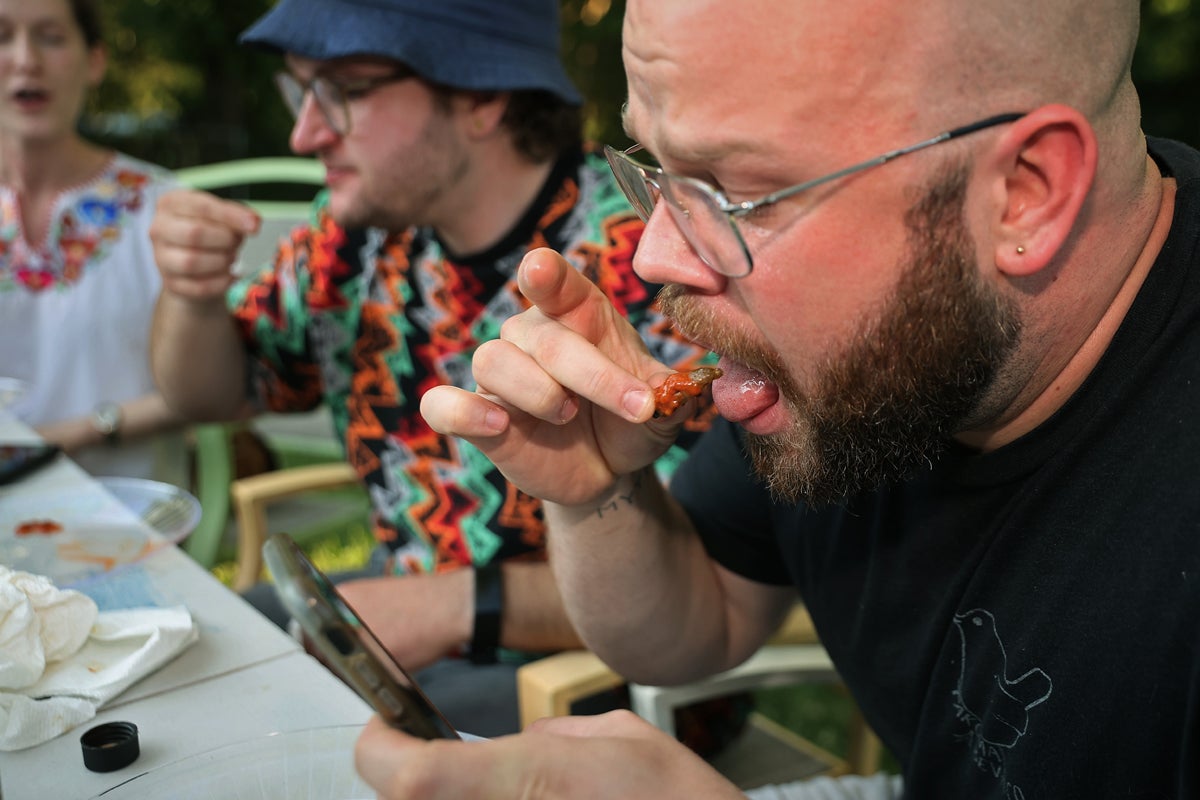
Landau says it is a great opportunity for scientists and environmentalists “to share how easy it is to gather your own food and consume what is in your own backyard”.
When they first emerge from the ground, cicada nymphs are white and soft, similar to a soft shell crab. “They are arthropods. It is no different to eating lobsters or crabs,” says Landau.
If you do harvest them, do it right after they come out of the ground when they shed their old body armour
“They’re an overlooked resource,” says David George Gordon, also known as the Bug Chef. Gordon started cooking with insects in the 1990s and has published several award-winning cookbooks which include recipes such as deep fried tarantula spider and pear salad with Changbai ants.
“It’s a great opportunity to get people over this ick factor,” says Gordon, adding that not only are the cicadas abundant and free, they are also rich in vitamins and minerals.
Cicadas have a fleshy, chewy texture and taste similar to shrimp, according to Gordon.
He recommends using them as a pizza topping, along with sundried tomatoes, artichoke and cheese. People who are allergic to shellfish should steer clear of eating cicadas, he warns.
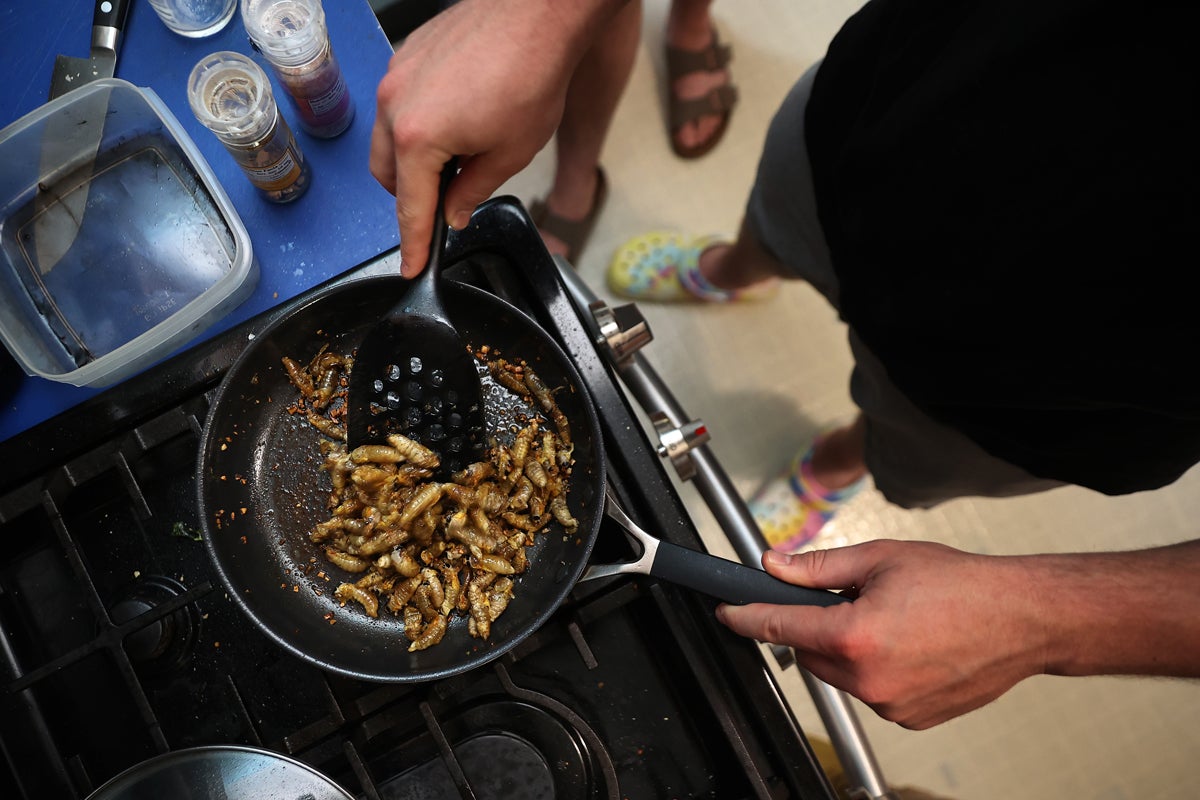
“If you do harvest them, do it right after they come out of the ground when they shed their old body armour,” says Gordon, adding that they are chewy rather than crunchy at this point. People should avoid foraging for cicadas in areas where pesticides are used, he adds.
After harvesting the cicadas, Gordon recommends freezing them. This is the most humane way to kill them. “Most people don’t like cooking with live animals. When they are frozen, they drift into a deep sleep,” he says.
“Insects are extremely nutritious,” says Landau. They are incredibly rich in protein as they have a large number of muscle fibres, she notes.
“A lot of insects contain all the essential amino acids,” says Gordon. “Crickets have omega 3 fatty acids, which you also get by eating oily fish.” They also provide a similar amount of protein per gram to lean beef, he says.
Introducing insects into our diets doesn’t just bring health benefits. It could also help tackle global food insecurity and the climate crisis, scientists say.
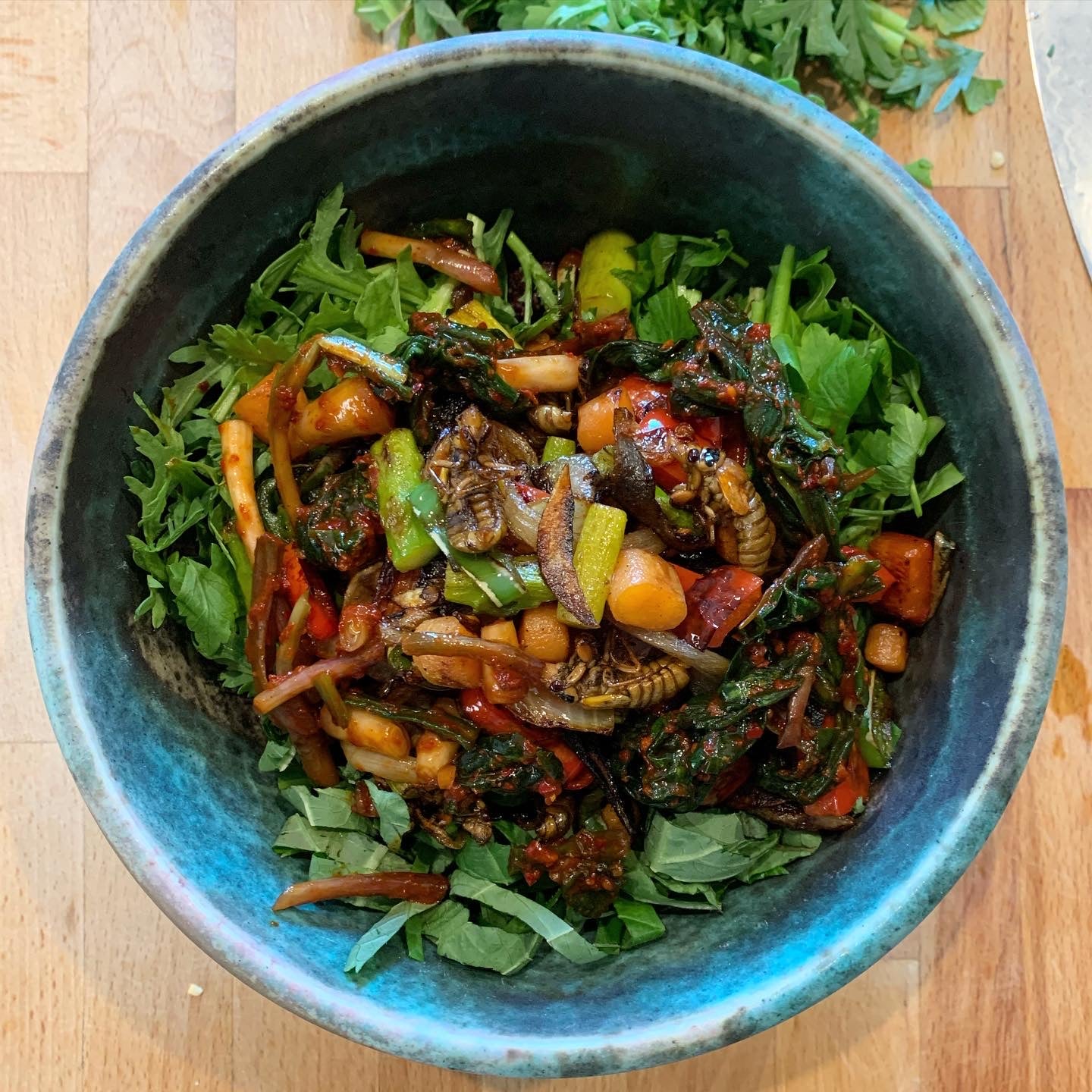
Insect farming requires a fraction of the land, water and energy needed for rearing livestock. While cows and sheep need huge swathes of pasture to graze on, insects can be reared easily in small spaces. They reach maturity within days of being born, rather than the months or years it takes livestock, and when they do, they produce thousands of offspring.
Insect cultivation also has a significantly lower carbon footprint than traditional farming.
Agriculture is the biggest driver of global biodiversity loss and farming animals accounts for 14.5 per cent of global greenhouse gas emissions, according to the United Nations Food and Agricultural Organisation (FAO). In order to keep global temperatures below 1.5C, scientists warn that we drastically need to slash emissions from food production.
Crickets produce up to 80 per cent less methane than cows, according to a study by researchers from the University of Wageningen in the Netherlands. Methane is a highly potent greenhouse gas which has a global warming impact 84 times higher than CO2 over a 20-year period.
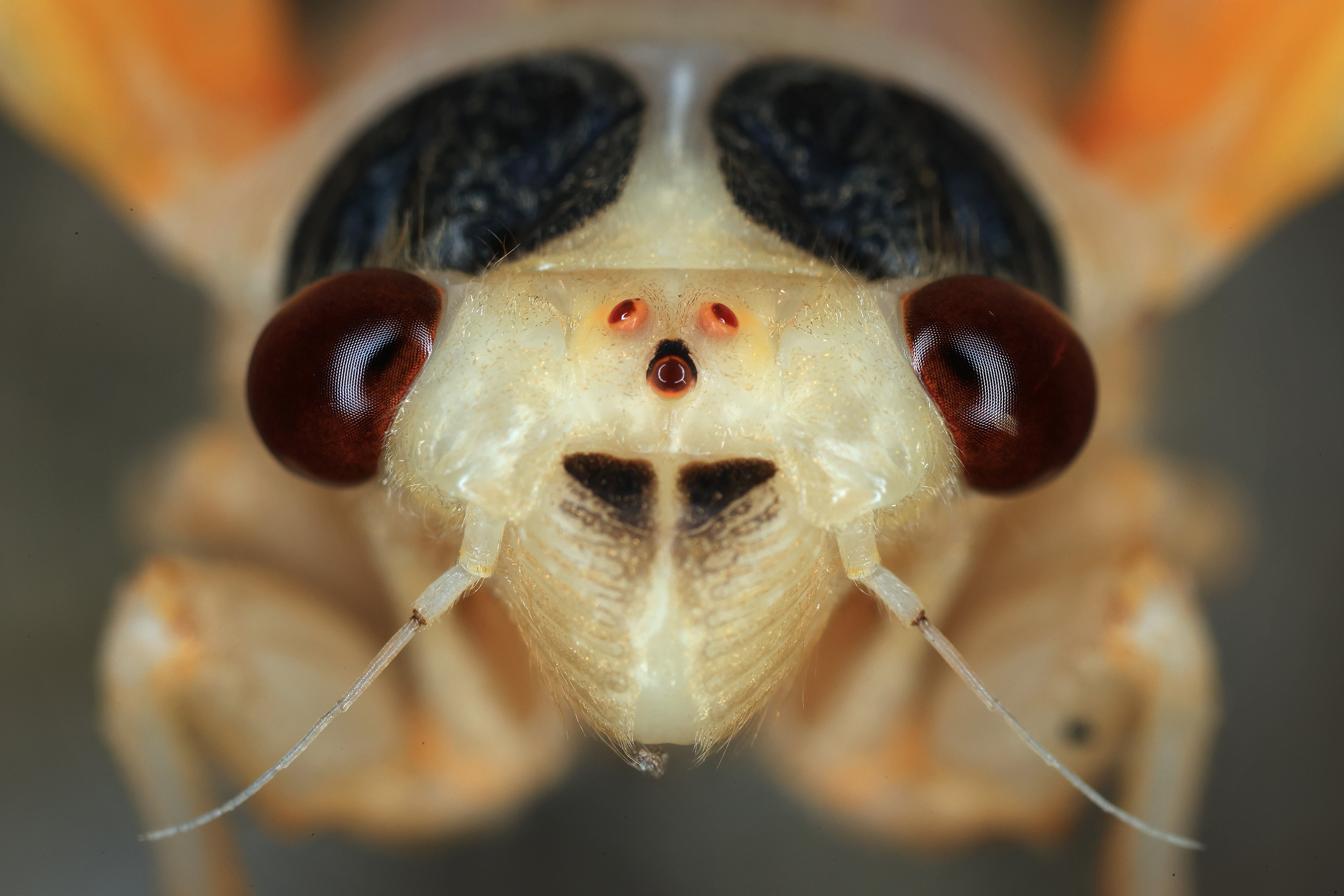
Insects are also much more efficient at turning their food into protein. According to the FAO, crickets need six times less feed than cattle, four times less than sheep and two times less than pigs. This is because insects are cold-blooded and therefore waste less energy to maintain their body temperature.
Scientists say that cultivating insects worldwide would free up vast areas of land that are currently used to farm animals and grow feed for livestock. Replacing half of the world’s meat consumption with crickets and mealworms would cut farmland use by a third, and lead to a major reduction in global carbon emissions, according to a study by researchers at the University of Edinburgh.
Despite their strong environmental and health credentials, insects haven’t become staples in western diets. This is because they are viewed as pests, rather than valuable sources of protein in the US and Europe. Especially in cities, insects are generally seen as “undesirable invaders” and associated with dirt and disease, says Lockwood.
They have incredibly diverse flavour profiles and wildly different textures, ranging from crunchy to squishy
But attitudes are starting to change. By 2027, the global edible insects market is projected to reach $4.63bn (£3.36bn) and demand is growing fastest in North America.
“This market will grow, in part out of environmental necessity, in part because of consumer demand,” says Landau.
“As consumers become more concerned about the sustainability of their food, and whether it has been raised in an ethical way, they are seeking out alternative sources of protein.”
The shift in attitudes is already visible, says Yoon, noting that when he started Brooklyn Bugs in 2017 many people treated insect eating as a joke. “Now major media outlets are talking about edible insects – what a transformation.”
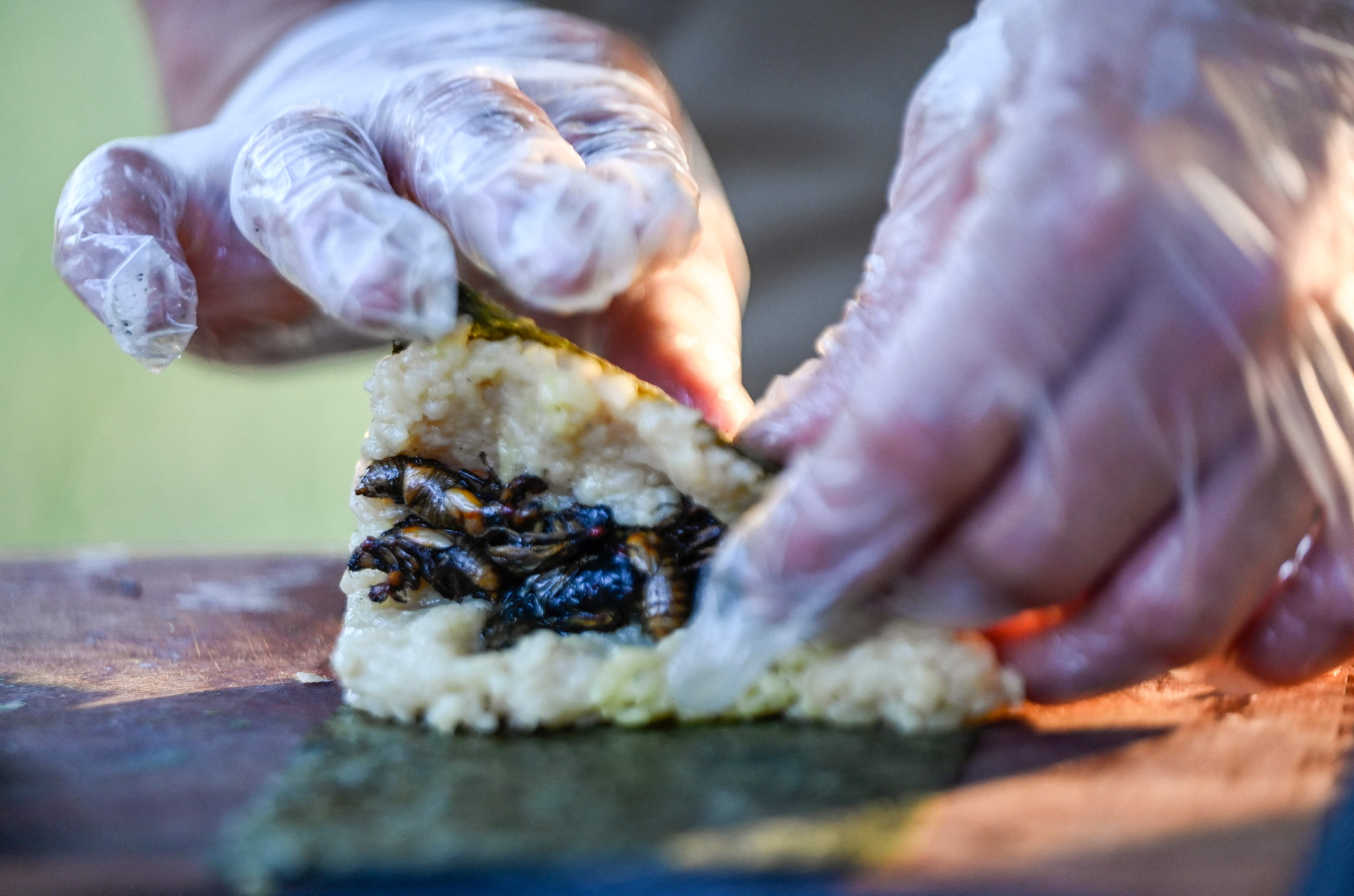
Landau expects the biggest growth to be in processed insects, which are ground down into powders or included in protein bars, rather than whole insects.
Insect-based snacks, such as coconut brittle Bugitos, made from mealworms, are already sold in the US. They are relatively expensive but prices should fall as the market grows, she says.
Yoon believes that pre-made meals, such as mac and cheese made with cricket powder, offer the best commercial option. “Many people don’t want insects in their kitchen. We need to give them something they can throw in the microwave,” he says. “This way they don’t have to cook with insects directly. It is a big ask in the beginning.”
Even as a chef, Yoon says he has “not even scratched the surface of how we can use insect protein”.
“I want to include insects in every dish and type of cuisine possible,” he says. “They have incredibly diverse flavour profiles and wildly different textures, ranging from crunchy to squishy.”
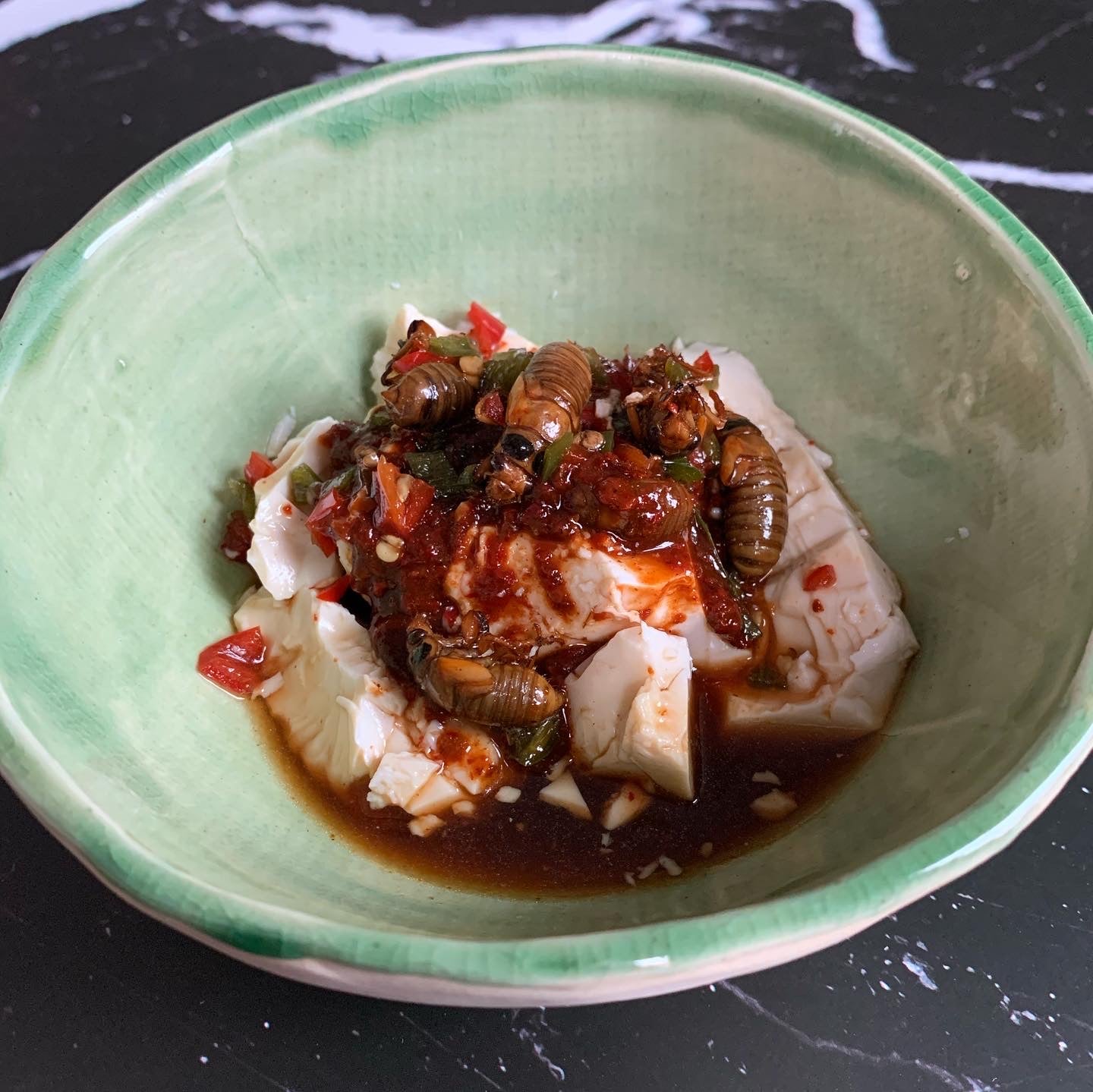
Box with cicada pizza recipe
Ingredients
For the dough:
1 tsp active dried yeast
1 tsp sugar
¾ cup warm water
1 tbsp olive oil
2¼ cups bread flour
⅓ cu/p cornmeal
For the tomato sauce:
2 tbsp olive oil
1 onion, finely chopped
1 clove garlic, crushed
450g peeled tomatoes, sliced into 2cm chunks
1 tbsp tomato paste
½ tsp sugar
½ tsp chopped fresh oregano
½ tsp chopped fresh basil
Salt and pepper to taste
For the toppings:
½ cup grated mozzarella cheese
6 marinated artichoke hearts
8 sun-dried tomatoes in oil
8 sub-adult periodical cicadas, thawed frozen or freshly caught,
1 tsp red pepper flakes
Method
1. To make the dough, combine the yeast, sugar, and ¼ cup water. Add this liquid, the olive oil, and remaining water to the flour and cornmeal. Mix to a soft dough, then knead on a lightly floured board until smooth and elastic, about 10 minutes.
2. Place dough in a greased bowl and cover with a cloth or plastic wrap. Let rise for 45 minutes or until doubled in size.
3. While waiting for the dough to rise, begin making the tomato sauce. Heat the olive oil in a medium saucepan. Add onion and garlic, and cook until soft.
4. Stir in tomatoes, tomato paste, sugar, oregano, and basil. Season with salt and pepper. Cover the saucepan and simmer for 30 minutes, stirring occasionally. Remove from flame.
5. Punch down the risen dough and knead briefly. Place in the center of an oiled 30cm pizza pan. Press outward, using the knuckles, until dough is evenly spread, filling the pan. Pinch a lip around the edge to contain the sauce. Brush the dough with olive oil.
6. Preheat the oven to 220C.
7. Spoon tomato sauce over the dough. Spread mozzarella cheese uniformly over the sauce.
8. Drain the sun-dried tomatoes, reserving the oil. Coarsely chop them and the artichoke hearts, artfully arranging the two items over the cheese.
9. Top with fresh or thawed frozen periodic cicadas.
10. Sprinkle the completed pie with 1 or 2 tablespoons of the reserved oil. Bake for 15 to 20 minutes, until the cheese has melted and the dough is crisp and golden. Dust with red pepper flakes and serve.
11. Wait 13 to 17 years and repeat this entire sequence.
Join our commenting forum
Join thought-provoking conversations, follow other Independent readers and see their replies
1Comments